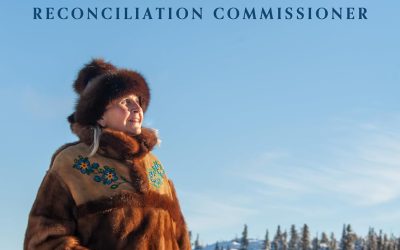There is rarely anything as powerful as telling the truth about what is obvious to plain common sense but which is collectively denied to avoid giving offence.
This is especially relevant in the area of Aboriginal policy. Despite massive funding increases, on-reserve Indians lag behind other Canadians in areas such as income and access to housing and health care; suicide and addictions also eat away at indigenous communities.
In 2009, this situation is embarrassing and should provoke action. Gordon Gibson, in his book A New Look at Canadian Indian Policy: Respect the Collective – Promote the Individual, makes such a pitch. Rather than present a policy book which focuses on specific legislative changes, Gibson looks at the problem with clear eyes. As a former aide to Pierre Trudeau, a one-time B.C. Liberal leader, and public policy expert, Gibson is well-qualified to write this work.
The civil rights struggle of the 1960s demonstrated to Americans the moral imperative of acting on the “Negro question” once and for all. During the Civil War era, President Lincoln asked Americans whether “this nation could live half-slave and half-free.”
Similarly, Gibson challenges Canadians to view the condition of Canada’s Indian population as the “most important moral question in federal politics.”
This reviewer, who has visited reserves and witnessed the Third World living conditions and oppressive band governments there for years, agrees.
The major contribution and strength of Gibson’s work is his decision to view the issues with a moral and philosophical lens that is not covered over with gunk which comes from blurred thinking. He steps back and asks what’s wrong with the big picture? Answer: the way that Indians (he uses the term deliberately to correspond with legal and constitutional descriptions) are viewed only in collective terms.
All of the constitutional and legal structures built around “Indians” assume they are and should remain part of the tribal collective and their governments are weighted heavily towards the group. In particular, Gibson’s characterization of the problem with band government as being “small governments with large powers” is spot on.
Gibson, in his section on principles, argues collective rights should always be viewed as instrumental to individual rights, which must take the first rank over other rights. If First Nations want to live collectively and preserve their culture, individuals must deem that worthwhile and do it themselves. Legal structures should not impose this path. Otherwise, the result is a “parallel society,” of which Gibson is critical. This parallel society refers to the society reserved for Indians that emphasizes difference and isolation as much as possible and is held together by legal structures. It is promoted heavily by Aboriginal activists and academics.
Gibson outlines legal and constitutional roadblocks to true equality for Indians, but argues that coercion for good causes is still wrong. While he prefers an individual rights solution, he asserts it would be wrong to impose it. Choosing the parallel society should be a free decision. Both Gibson and this reviewer note that the residential schools and the 1969 White Paper taught us the effects of coercion. The problem is that too many incentives are weighted against individuals. Without eliminating the parallel society, Gibson proposes adding new choices for individuals, such as education vouchers, having welfare administered provincially, and sending federal money for services directly to Indians, thereby bypassing Indian governments. All of these ideas are worth exploring, but will be fought tooth and nail by Indian leaders.
On another problem of what to do with remote reserves and the Indians trapped on them—they are in effect trapped in a modern-day internment camp because of the lack of opportunity, opportunity which will never come to a hamlet of at most several hundred people, Gibson proposes urban settlement money for Indians; it is akin to providing settlement money to immigrants and it is a compelling proposal.
The only concern is that he leaves open the question of what happens to those who stay on reserves. Even if they don’t exercise the right of exit, those on reserve are entitled to basic governance and human rights. Gibson supports reform, but resists the imposition of external rules on bands.
In his section on “treaties, governance and other arrangements,” he rejects Tom Flanagan’s arguments that we have a right to impose accountability. Using the Aboriginal rights sections of the Charter, Gibson argues that either we “believe in Indian exceptionalism or we do not.” While recognizing oppression, Gibson asserts we must allow some of it if we believe the parallel society should be a free option.
This is troubling. Public financing does equal public scrutiny. These are government-sanctioned communities, not Hutterite colonies, so the state has some role in regulation. Also, history — and this reviewer’s experience of reserve life — teaches that power is never voluntarily given up by the oppressor. If Indians must wait for enlightened leadership, they will in some cases wait forever. If lower-income Indians demand empowerment, they will need government oversight, accountability and intervention; these power structures will not vanish on their own.
A New look at Canadian Indian Policy is a landmark book. Its philosophical approach is refreshing and its ideas for empowering the individual are engaging. This text should be central in any philosophy or political science course studying First Nations. It should also be read by policy makers, as Gibson has made an enduring contribution to the discussion of the much-vaunted but rarely-questioned Indian collective.


